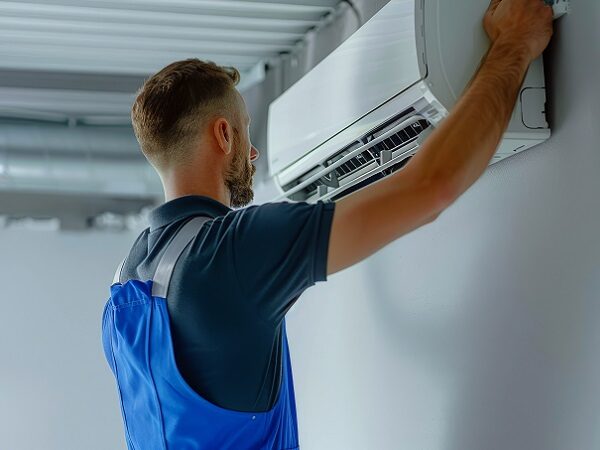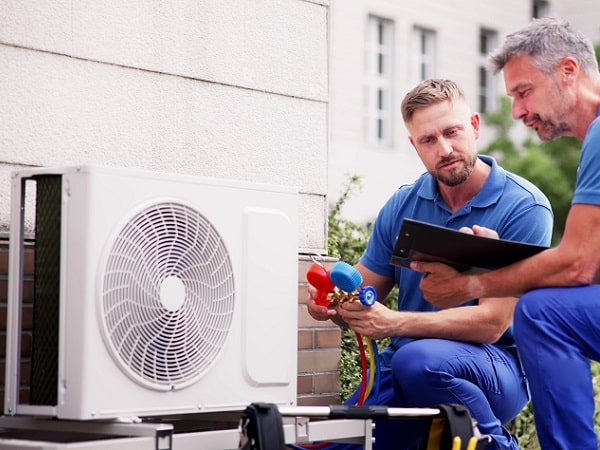How To Monitor And Improve Ventilation in Workplaces
Throughout the pandemic, workplaces have had to make many adjustments to protect their staff, customers and the public from Coronavirus. However, now we have more data about how the virus spreads, the focus for workplaces is on ventilation.
So, why is ventilation so important, and what steps can you implement to improve ventilation and protect your staff?
Why Ventilation Is Now A Top Priority
Scientists have now confirmed that the virus spreads through aerosol. This means that the air carries tiny droplets and particles. These aerosol particles as usually exhaled outward from the source (someone carrying the virus) and then inhaled by other parties.
Those most at risk of transmission of the virus are within three to six feet of the source. This is where the concentration of aerosol particles is the greatest. However, it is crucial to remember that the particles can travel much further than this. Furthermore, when the particles are small, they can remain suspended in the air for hours.
So, to reduce the risk of transmission, it is vital to reduce the particle build-up in the air.
This is where ventilation becomes so important as it helps to reduce the concentration of exhaled air and fluids (and aerosol particles). Ventilation helps to reduce the build-up of particles which can help to lower the risk of transmission.
It is particularly important in places with increased exhalation (such as places of physical exertion, singing or speaking) and places where people may have prolonged exposure, such as spending more than 15 minutes in these conditions.
Is My Workplace Ventilated Enough: How To Measure Ventilation
One of the easiest and recommended ways to measure ventilation is with a carbon dioxide (CO2) monitor. As people exhale carbon dioxide, wherever there is a build-up of CO2 can mean that ventilation needs improving.
It is important to remember that a build-up of CO2 does not mean the virus is present. Instead, it simply shows an increased risk of particles in the air because of poor ventilation. This means that should someone in the space be carrying the virus and exhaling it, then these particles may remain in the air, increasing the risk of virus exposure to others in that space.
So, checking CO2 levels can help you determine how well the air is moving through your space, helping you prevent the build-up of airborne particles and, therefore, the risk of the virus.
How To Use CO2 Monitors
As CO2 levels can vary throughout indoor environments, it may be useful to have several monitors in different areas, to measure levels throughout your workplace. The best place to install the monitors is at head height and away from windows, doors and other areas of air supply. You should install monitors at least 50cm away from people (this is because their exhaled breath may give a false reading).
When installed, you can then use the monitors to take ‘in the moment’ snapshot readings of the CO2 levels. It is essential to take regular measurements as it is likely that the readings will change throughout the day. By taking a series of measurements, you can create averages that will give you a more accurate picture of your ventilation levels.
What Measurements Indicate Poor Ventilation?
Measurements from a CO2 monitor will give a result in Parts Per Million (PPM).
- A well-ventilated outdoor space will have a reading of around 400 PPM
- A well-ventilated indoor space will have a reading of less than 800 PPM
- Poor ventilation will have a reading of around 1500 PPM
- If your space has a reading of above 1500 PPM, this is a strong indicator that you need to improve ventilation.
- If your environment is a place of high levels of physical activity or a space with high levels of talking or singing, then the Health and Safety Executive (HSE) recommends adding ventilation methods to keep measurements below 800 PPM.
If you need support installing, placing or measuring CO2 levels and ventilation in your property or business, then Atmostherm can help. Atmostherm are HVAC specialists that can help you to measure and improve ventilation.
Is Ventilation A Legal Requirement?
While many restrictions have been removed regarding Coronavirus, such as social distancing and mask-wearing, the government still requires workplaces to undertake risk assessments in relation to Covid.
Workplace controls for the risk assessment remain in place, including hand hygiene, adequate cleaning practices, and sufficient ventilation.
Even before the Coronavirus pandemic, ventilation has been a legal requirement as part of the Workplace Regulations Act 1992. However, to protect the public and staff members in the wake of Covid, many organisations are looking to increase their ventilation measures.
How To Improve Ventilation
There are two main ways to improve ventilation:
Natural ventilation – This allows fresh air to travel naturally through the environment. Natural ventilation includes strategies such as using air vents, open doors and windows. This is often referred to as passive airflow.
Mechanical ventilation – This type of active airflow requires intervention to allow air to circulate. Mechanical ventilation strategies include fans, ducts and other systems that help to maximise the intake of fresh air while reducing the impact of air circulation.
Top Tips To Improve Ventilation
- Regular ‘air’ or purge rooms by fully opening all doors and windows
- Talk to workers about the importance of ventilation
- Adjust your HVAC systems to draw in more air
- Reduce air re-circulation by adjusting the number of air changes on your mechanical air systems.
- Use fans near open windows to help air to circulate
- Increase the use of air cleaning and filtration units
- Seek advice from HVAC experts to get more from your systems.
At Atmostherm, we can help with the installation of airflow and ventilation units as well as helping you to get more from your existing heating, ventilation and air conditioning systems. We can help you adjust your systems and settings to help improve the airflow in your property and help you remain compliant with workplace regulations.
To find out more about how to improve ventilation in your workspace, talk to our experts today. We offer free and friendly consultations as well as expert monitoring and ventilation strategies to help keep your premises, staff and the public safe.
Speak to a HVAC expert today
Enter your details below to get a call back from one of our HVAC experts.



